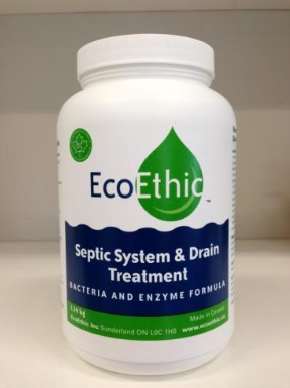Bacterial Additives
Recent interest in wastewater treatment and disposal has led to the use of additives, stimulators, or enhancers for a septic system. It has been suggested that additives can be used in a septic system to accelerate digestion of biosolids, break up scum, improve settling through coagulation, or rejuvenate a clogged soil absorption system.
However, it should be understood that, in most cases, the purpose of using an additive is to digest or “liquefy/gasify” the solids in a septic tank, rejuvenate stressed bacterial populations in the septic tank, or improve the settling ability of solids in the septic tank.
There are two distinct categories of additives used in a septic system: 1) chemical includes inorganic and organic compounds and 2) biological, includes yeast, bacteria, and enzymes. There are approximately 1,200 additive products on the market today, many of which contain enzymes that can be purchased through septic tank pumpers, discount stores, and chemical companies.
The beneficial effects of biological additives on the septic system are still being debated, but two benefits may ultimately be identified. Based on available literature, enzymatic products might have the ability to reduce the amount of oil and grease in the septic tank. Second, under septic tank bacterial “die-off” conditions, slight reductions in the amount of effluent solids have been achieved by using additives.
A research study by Mark Gross, Ph.D. has shown that septic tank “die off” conditions occur when the bacteria in a septic tank are destroyed due to the presence of toxic substances. Die-off conditions were observed when adding a concentration of 1.85 gallons of liquid bleach, 5.0 gallons of liquid Lysol cleaner, or 11.3 grams of Drano drain cleaner to a standard 1,000-gallon septic tank. Other factors that can cause die-off include the use of anti-bacterial agents, and, in certain cases, medications taken by the home-owner.

Request a Service
